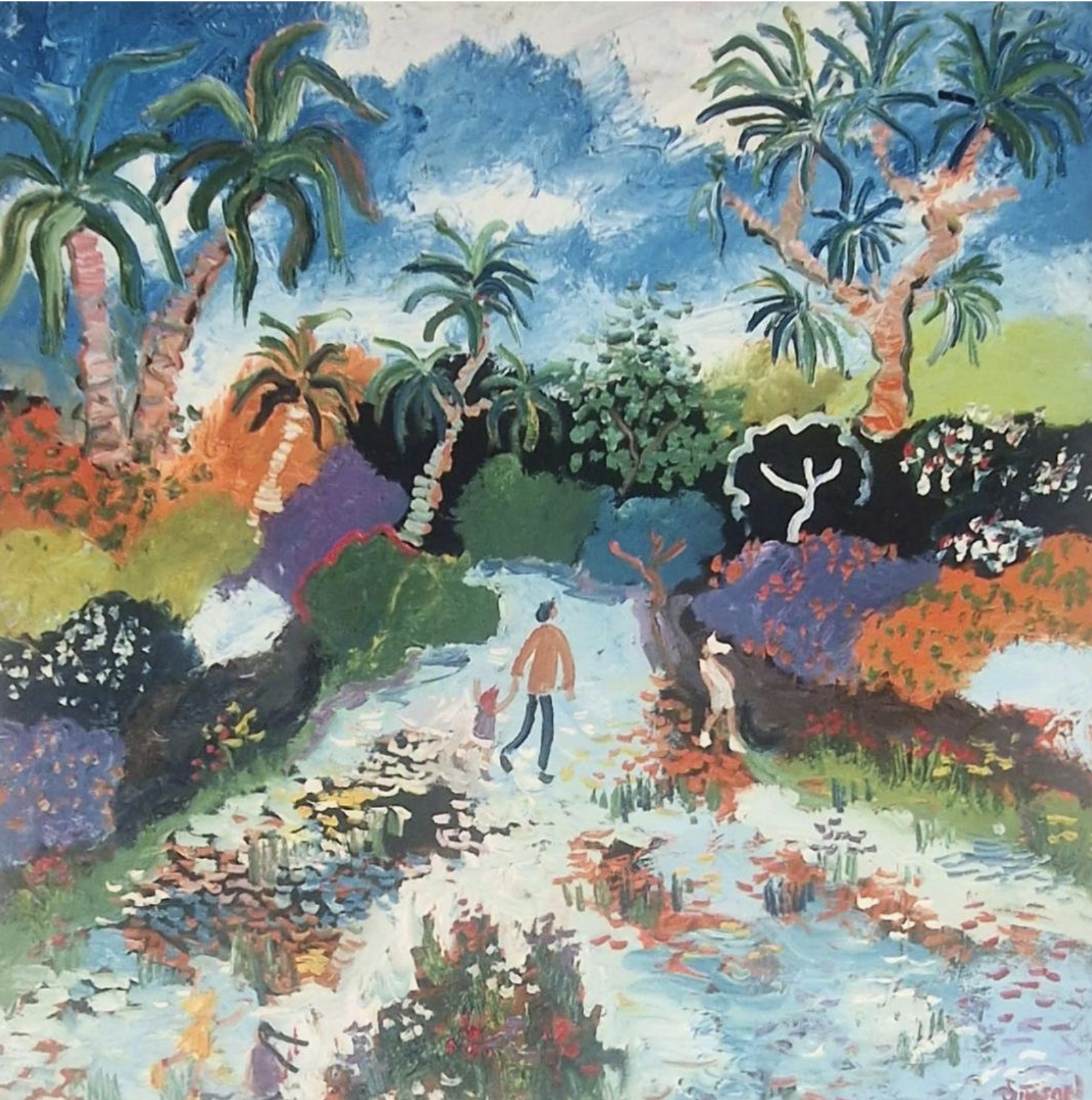How Cornwall Became a Powerhouse of British Art
An origin story written in salt, stone, and abstraction.
Long before it was home to Tate St Ives or international residencies, West Cornwall was just… remote. Wind-beaten, low-lit, and hard to get to. But that was exactly the point. The light in Cornwall has amazed artists making it a focal point for inspiration.
By the early 19th century, painters were already settling in St Ives, capturing the coast in oil and watercolour. But it wasn’t until 1877, when the Great Western Railway extended its reach to the far west, that Cornwall became a true destination. Suddenly, what was once a rugged outpost was accessible. And artists came — looking for space, for light, and for something that didn’t yet have a name.
The Turning Point: Alfred Wallis
In 1928, Ben Nicholson and Christopher Wood arrived in St Ives. While wandering the town, they came across the work of Alfred Wallis — a retired fisherman painting ships and harbours from memory, directly onto bits of old cardboard. His work ignored traditional perspective and had a raw, instinctive energy. It changed Nicholson’s direction entirely. Wallis gave British modernism its first local jolt.
War, Abstraction, and the Arrival of Hepworth
When the Second World War began, Nicholson and his wife, the sculptor Barbara Hepworth, moved to Cornwall permanently. With them came Naum Gabo, a Russian constructivist whose influence brought clarity, geometry, and a European modernist sensibility to the town. The trio laid the foundations for what would become known as the St Ives School — not a formal institution, but a loose circle of artists linked by place, experimentation, and the shared belief that art could be shaped by its environment.
After the war, St Ives became a magnet. Artists arrived steadily throughout the 1950s: Wilhelmina Barns-Graham, Patrick Heron, Peter Lanyon, Bryan Wynter, Terry Frost, and others. Most had trained in London. Many had fought or lived through the war. In Cornwall, they found clarity. The chaos of post-war Britain could be answered by abstraction — work rooted in landscape, but unafraid to leave it behind.
Lanyon famously took up gliding to better understand the shape of the coastline from above. Heron experimented with flat fields of colour that captured mood rather than location. Frost painted with the same rhythm he danced with. It was deeply personal work, but it wasn’t self-indulgent. It had rigour. It had presence. And collectively, it formed one of the most important chapters in post-war British art.
Not Just Painting
Alongside the painters came potters. Bernard Leach, often called the father of British studio pottery, had set up his pottery in St Ives as early as 1920. His influence — particularly the way he fused Japanese and British ceramic traditions — added another dimension to the Cornish art scene: one that celebrated material, function, and the handmade.
The Legacy
By the 1960s, the St Ives School had gained international attention. But it wasn’t until 1993 that the movement’s legacy was formally recognised with the opening of Tate St Ives — a purpose-built gallery overlooking Porthmeor Beach. It didn’t just house the work of the past; it revitalised the town’s creative identity, attracting a new generation of artists, curators, and collectors.
Today, Cornwall remains a place where artists go to work things out — quietly, on their own terms. The coastline still shapes the canvas. The weather still gets into the paint. And the St Ives movement, though now historical, remains alive in the way it changed how British art understands place.
It proved that modernism didn’t have to come from the centre. Sometimes, the most radical ideas begin on the edge.
The St Ives School wasn’t defined by a single aesthetic, but by a shared curiosity in how art could respond to place. From the 1940s to the 1960s, its artists explored abstraction in various forms—often grounded in the Cornish landscape, but rarely literal. Painters like Peter Lanyon and Bryan Wynter developed a dynamic style of abstract landscape painting, using gestural marks and aerial perspectives to capture the movement and atmosphere of West Cornwall. Others, including Ben Nicholson, Barbara Hepworth, and Adrian Heath, drew from European Constructivism, favouring geometry, structure, and a pared-back visual language that balanced clarity with experimentation. Patrick Heron and Terry Frost brought colour to the forefront, using flat planes and intuitive palettes to evoke sensation and rhythm, while Trevor Bell expanded abstraction into large-scale, often spiritual forms. Alan Davie added a more mythic and improvisational energy to the mix—layered, symbolic, and instinctive—while Simeon Stafford, though of a later generation, echoed the liveliness of the region through vibrant, narrative scenes of Cornish life. Across all of these approaches, there was a consistent emphasis on process, material, and environment: the belief that the coastal light, raw weather, and shifting terrain of Cornwall could shape both subject and style.
If you’re in Brighton, don’t miss the chance to see this legacy reimagined—my dad’s exhibition, Oi Oi Sailor, is open now at Indelible Fine Art and runs until 16 July.










